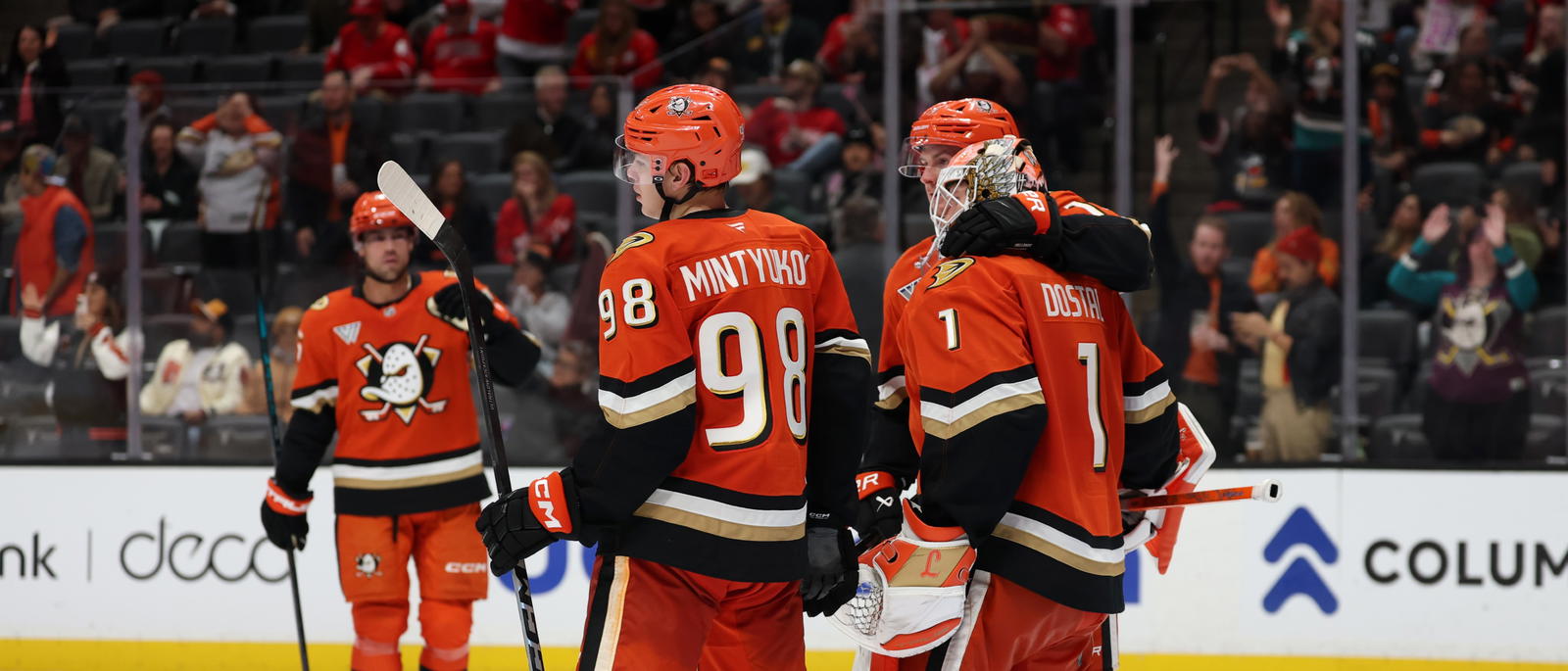https://sports.yahoo.com/nfl/article/what-do-nfl-trade-deadline-deals-mean-for-future-of-sinking-cowboys-rebuilding-jets-and-contending-colts-042446557.html
On Monday night, Troy Aikman, arguably the most bluntly honest arbiter of the state of the Dallas Cowboys, said what seemingly everyone was thinking. As Dallas’ defense was getting pummeled by an otherwise anemic Arizona Cardinals offense, the subject turned to what could be done to fix the problems. Earlier that day, Cowboys owner Jerry Jones had told SiriusXM’s “Stephen A. Smith Show” that he already had a yet-to-be-announced trade in the bag.
With the Cowboys trailing 24-10, Aikman rendered his judgement for ESPN’s “Monday Night Football” audience:
Advertisement
“He may want to cancel that trade,” Aikman said after chuckling. “I don’t think one player, from what I’ve seen tonight, is going to make a difference for this team.”
On Tuesday, Jones responded to that dismissal by raising the stakes to two players, liquidating multiple assets for New York Jets All Pro defensive tackle Quinnen Williams and Cincinnati Bengals linebacker Logan Wilson. Among them? In exchange for Williams, a 2027 first-round pick (whichever is higher in the draft order between their own choice and the first-round selection attained from the Green Bay Packers in the Micah Parsons trade); a 2026 second-round pick; and defensive tackle Mazi Smith, whom the Cowboys drafted in the first round of the 2023 draft. In exchange for Wilson, Dallas sent the Bengals a 2026 seventh-round pick.
The Williams deal was the Jets’ second colossal trade of the day. In the other, they sent their franchise cornerback, Sauce Gardner, to the Indianapolis Colts for first-round picks in 2026 and 2027 and wideout Adonai Mitchell. That pair of deals shifted the landscape for all three teams involved, signaling a total reboot by the Jets that is now officially underway, an all-in move by the Colts and a desperation move by the Cowboys that may have more tangible impact in 2026 than the remainder of this season.
Here’s what the moves mean for all three teams:
Advertisement
First, the Wilson deal for a seventh-rounder is low on risk. He can step in and immediately play a role as a linebacker for Dallas and help shore up the run defense. The question is whether he’s still capable of being the player who thrived as a tackling machine under former Bengals defensive coordinator Lou Anarumo, or if he’s the player whose production declined and effectively led to a benching under current Cincinnati defensive coordinator Al Golden.
The spin here is Wilson’s contract. He still has two years and $13.7 million remaining on his deal after this season, but none of that money is guaranteed. If he plays well, Dallas can retain him at those numbers. If he’s mediocre through the remainder of this season, Dallas can move on with zero salary cap pain.
Williams, on the other hand, is the bigger picture player who will have a significant impact up front on the defensive line. He should instantly become the Cowboys’ best defender, and give Dallas a top-end defensive tackle rotation alongside Kenny Clark and Osa Odighizuwa. That’s a trio that can do damage, with Williams having the added ability of rushing the passer from the interior. He also turns 28 in December, which makes him a viable defensive centerpiece through the remainder of a contract that runs through the 2027 season.
The Cowboys are hoping Quinnen Williams can help transform a unit that has struggled stopping opponents this season. (AP Photo/Peter Joneleit)
(ASSOCIATED PRESS)
His cap outlay in 2026 and 2027 is $47.25 million, which is where the twist comes for Dallas. With Odighizuwa signed through 2028 on a four-year, $80 million deal, trading for Williams now gives Dallas the flexibility of exiting Clark’s contract after this season. That, or pushing him to restructure his deal, which calls for a $21.5 million payout in 2026 and a $20 million outlay in 2027. However, none of Clark’s salaries are guaranteed after this season. If he won’t restructure or Dallas sees it as a wild luxury to have three defensive tackles making more than $20 million per season, the Cowboys can walk away from Clark after 2025. That’s a lot of salary relief to be had between Clark and Wilson starting in 2026 if Dallas wants it.
Advertisement
Of course, that’s just the money. There is the matter of the remainder of the 2025 season and whether these moves, along with the expected return of linebacker DeMarvion Overshown, can somehow get the Cowboys’ defense right enough to reel off at least seven wins in Dallas’ final eight games. If that happens, Dallas could finish 10-6-1 and have a shot at catching a wild card, assuming the Philadelphia Eagles don’t fall apart down the stretch and open up a shot for Dallas to win the NFC East. To do that, Dallas’ defense is going to have to effectively be reborn with the additions of Williams and Wilson, and the return of Overshown. Somehow, that trio would have to lock down the run game and help engineer a pass rush that would help cover for the secondary, which has been the biggest issue for the Cowboys. If that doesn’t happen, and the defense doesn’t improve enough to save the job of coordinator Matt Eberflus, Jones will then have options. The primary one being replacing Eberflus and reshaping the defense around Williams and a scheme that fixes problems in the secondary.
As Aikman suggested Monday night, it felt too late to save 2025. Jerry Jones pushed some massive trade chips into the pot anyway. Now we’ll see which is right.
The total rebuild has begun. That’s the obvious takeaway from the Jets dealing their two young defensive stars in Sauce Gardner and Quinnen Williams, while picking up three first-round picks, one second-round pick and a pair of young players in need of a fresh start (defensive tackle Mazi Smith and wideout Adonai Mitchell).
Advertisement
In the near term, the beginning of a tear down is bad news for some in the organization. First and foremost, it now puts head coach Aaron Glenn at the helm of a team that is not just retooling at one or two positions, but also trying to figure out how many remaining players really want to be part of the franchise moving forward. It signals that more viable pieces of the depth chart will depart in free agency, likely including running back Breece Hall and guard Alijah Vera-Tucker. Defensive end Jermaine Johnson could also end up as a trade piece following the season, although the Jets reportedly declined to trade him to the Chicago Bears at the deadline.
There is a bigger picture here, and that’s the opportunity to try — yet again — to get the quarterback position right. While Justin Fields is coming off a nice rebound game in a win over the Cincinnati Bengals, that’s unlikely to have changed the mind of team owner Woody Johnson, who has already painted Fields as the center of the team’s offensive problems. Fields will have the remainder of the season to try and make his case to be the team’s long-term QB answer, and he’s at least buoyed by moves the Jets didn’t make, namely, trading away Hall or wideout Garrett Wilson. Both of those players will be able to help Fields down the stretch, but he’s now going to be tasked with likely having to score more points after his defense lost two cornerstone pieces at the deadline.
Jets head coach Aaron Glenn (right) will be more reliant on QB Justin Fields (middle) and wideout Garrett Wilson to be competitive in games after New York traded away its top two defensive players Tuesday. (Photo by Logan Bowles/Getty Images)
(Logan Bowles via Getty Images)
The likelier outcome for the Jets is that the team and front office is already in the process of sifting through quarterbacks in the 2026 NFL Draft, in hopes of determining if one of them is worth a top two or three pick. As it stands, the Jets would have the third pick in the draft. But they now also hold the Colts’ first-round pick in 2026 and are staring at a draft pool that could include as many as five potential first-round quarterbacks.
Advertisement
It’s not an absolute the Jets would use their own first-rounder on a quarterback resolution. Instead, they could take the route the New York Giants took in 2025, selecting edge rusher Abdul Carter with the third overall pick, then trading into position to take quarterback Jaxson Dart 25th overall. Almost certainly, the Jets will be using one of those first-round picks on a quarterback, barring another swing on a recycled veteran starter like, say, a rejuvenated Mac Jones.
And the remainder of the draft capital?
Well, the Jets will have three first-round picks — and their own second — in a 2027 draft class that is expected to offer a bumper crop of talent. That includes a potentially deep group of receivers that would help ramp up the offensive build around a young quarterback.
However the Jets do it, Tuesday marked Day 1 of a rebuild.
Advertisement
At least one of the contending teams was going to take a shot with an all-in move. The unknown was which team would have the guts to go for it and what the swing would look like.
Well, the Colts ended up being the stunner, trading away two first-round picks and wideout Adonai Mitchell for New York Jets cornerback Sauce Gardner. It’s a move that throws a significantly talented player into a secondary that was in need of it, while also acquiring a player who can play a big role in solving problem quarterbacks like the Buffalo Bills’ Josh Allen, Kansas City Chiefs’ Patrick Mahomes and Los Angeles Chargers’ Justin Herbert (not to mention the New England Patriots’ streaking Drake Maye).
One way or another, the Colts had to find another piece to impact passing games. Now they have one in Gardner who is under contract through 2030. As much as this was a play for this season’s sudden Super Bowl window, it sets a long-term defensive cornerstone into place.
Advertisement
There’s also one other implication for the Colts: They’ve dealt away their first-round picks for the next two drafts and have only two QBs signed beyond this season — inconsistent project Anthony Richardson (who is on injured reserve for the rest of the season) and rookie Riley Leonard. Dealing the picks strengthens the inclination to get Daniel Jones signed to a long-term extension sooner rather than later. But Jones is also coming off his first significant disaster performance of his Colts tenure, having turned the ball over a whopping five times in Sunday’s 27-20 loss to the Pittsburgh Steelers. Even with the hot first half of the season, there’s still a chance Jones hits a wall down the stretch and reminds everyone why the New York Giants released him last season.
The intrigue here is twofold. First, will the Colts insist on seeing how Jones performs down the stretch, then use the franchise tag as a tool to keep him in place while an extension is worked out? And second, if Jones does fall off significantly and raise doubts, will the Colts still sign him to a modest extension, or try to seek out another recycled option that has rejuvenated their career? With Mac Jones playing some of the best football of his career with the San Francisco 49ers right now, he will almost certainly be a player who offers flexibility for teams that want options next offseason.
Advertisement
It’s worth noting that like this season’s Colts, the 2024 Steelers also started the season 7-2 and thought they might have found a quarterback to move forward with. Instead, they finished 10-7, lost in the first round of the playoffs, and let both Russell Wilson and Justin Fields walk in free agency. There’s no guarantee the remainder of 2025 won’t unfold the same way for Indianapolis.
https://sports.yahoo.com/nfl/article/what-do-nfl-trade-deadline-deals-mean-for-future-of-sinking-cowboys-rebuilding-jets-and-contending-colts-042446557.html





